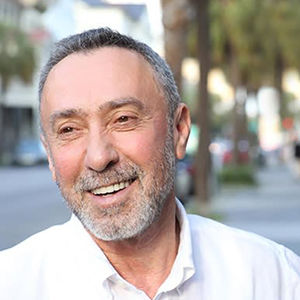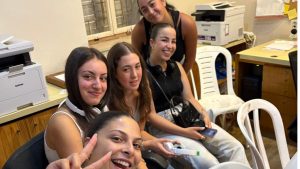Ex-Soviet watchmaker turns heads, hearts with sculpture
Published March 19, 2020
Editor’s Note: As of press time, the St. Louis University Museum of Art is only open to SLU students, faculty and staff and closed to the general public due to concerns about COVID-19. Visit the museum’s website (www.slu.edu/sluma) or call 314-977-6631 to check for updates.
In St. Louis for a gallery opening, Israeli artist talks with the Light about his work
“The artist breathes life into the material and, in return, the material infuses him with energy,” Leon Bronstein says in describing his beautifully symbiotic relationship with his work.
His small- and large-scale bronze sculptures are on view in the retrospective exhibition “Leon Bronstein: Between the Fantastic and the Real” at the St. Louis University Museum of Art (SLUMA).
Bronstein was born in 1951 in Tiraspol, Moldavia, in the former Soviet Union. As a child, he worked with his father, a tinsmith, to earn money for the family. He loved spending time outdoors collecting rocks and fragments of wood, which he used to make figures.
He wanted to make art, but the state trained him to be an engineer and watchmaker.
“In the Soviet Union, we had to go to school so we could work, and we had to work so we could get a pension,” he said. “It’s simple but machinelike. You knew your role, and that was all you had.”
In 1979, Bronstein, his wife and their two children immigrated to Israel to escape the oppression in the USSR. His third child was born in Israel. While he was looking for employment, he met the owner of a factory that made souvenirs for tourists. The owner wanted someone who could work with wood. Bronstein carved an olive wood sculpture to show his skill, and the sculpture sold.
He worked for the factory for two years. In 1981, he left to become an independent sculptor.
Today, he lives in an artists’ village in Ein Hod near Haifa.
“It’s a privilege to live in Israel and to make these sculptures,” Bronstein said. “Here, unlike in the Soviet Union, I could be whatever I wanted.”
He started making art first from carved wood and then in bronze. He likes the sense of resistance that hard materials provide, and the sense of accomplishment surrounding each completed work. Bronstein begins each piece with an idea followed by detailed sketches. Most of his work is figural, and most figures are abstract, with elongated bodies and minimalist heads.
Next, Bronstein determines the size and dimensions of the final piece by building a maquette (model) at the scale of the final piece. The maquette consists of an armature of metal rods welded to a supporting base. He uses Styrofoam, clay or plaster to create dimensional volume. Then he makes molds for casting. He casts each sculpture in parts and welds them together. He creates two to five sculptures per year.
Viewers have a lot of reactions to his work. He’s open to all interpretations.
“Art isn’t what the artist wants viewers to see,” Bronstein said. “It’s what viewers see. Some people go through my shows like they don’t see anything, while others have a deep impression.”
The show at SLUMA explores Bronstein’s 40-year career, beginning with early work and ending with current projects. Themes include relationships, communication, and movement and physical motion. Sketches of ideas for pieces are displayed alongside the finished works.
“Themes come to me naturally,” he said. “They capture the moments of my life. All of them are directly related to my own experiences, but I also want them to be universal.”
The same can be said for Bronstein’s subjects: “They pick me. I dream about them and then draw the ideas. Ideas come to me spontaneously. They always exist inside.”
A number of Bronstein’s pieces explore the theme of love. In one piece, “When I Fall in Love It Will Be Forever,” a bronze figure staggers under the weight of a huge heart on its shoulders. At the figure’s feet lies a few smaller hearts.
“The figure carries a big, heavy heart,” Bronstein said. “It’s heavy because it’s serious and important, and it’s impossible to leave.”
He takes a more lighthearted approach to love in another bronze, “Playing Love” (20 by 15 by 38 inches) which depicts a cavorting figure that stands on one leg, hips tilted forward. The figure holds a stack of five hearts of different sizes.
“This piece comments on how men think we’re in charge and choose the women we want,” Bronstein said. “I think it’s the opposite. Women choose us but make us think we choose them. The female figure in this piece plays with hearts and decides which one she wants.”
“To the Sky” (El Al in Hebrew) could be seen as a combination of the themes of love and motion. Two figures stand together, one in front of the other and both facing forward. They clasp hands. The sharp angles of their bodies imply a sense of dynamism and flight.
Bronstein describes the piece as such: “The couple is taking off into the sky. The man and woman have the same thoughts and are reaching something together.”
He sums up the premise of his show in one elegant statement:
“My sculptures are meant to illustrate an existence that is bound up with a physical reality that transcends both the fantastic and the spiritual craving for both the absolute and the infinite.”















